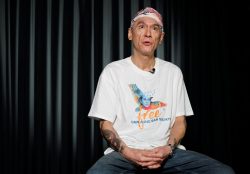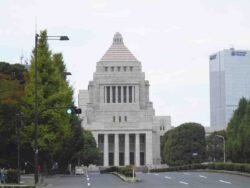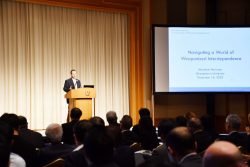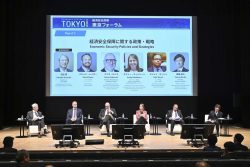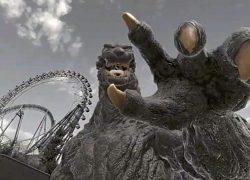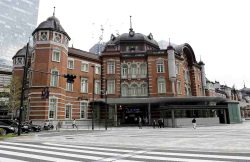
A satellite image shows an overview of the International Space Station with the Boeing Starliner spacecraft, June 7, 2024.
13:46 JST, June 22, 2024
NASA has further postponed the Boeing Starliner’s return to Earth from the International Space Station with its first crew of astronauts, to allow more time for review of technical issues encountered, the agency said on Friday.
It did not set a new date, raising questions about the timing of the return of the two astronauts on Boeing’s first crewed mission, which had initially been set for June 26, itself a pushback from the first potential date of June 14.
“Mission managers are evaluating future return opportunities following the station’s two planned spacewalks on June 24 and July 2,” NASA said in a statement.
The U.S. astronauts, Butch Wilmore and Suni Williams, lifted off on June 5 as a final demonstration to obtain routine flight certification from NASA.
“We are taking our time and following our standard mission management team process,” said Steve Stich, NASA’s commercial crew program manager.
“Starliner is performing well in orbit while docked to the space station,” Stich said, adding that the additional time would yield “valuable insight” into system upgrades for future missions.
The crewed test of the spacecraft, test-flown to space two times since 2019 without humans on board, has encountered five failures of its 28 maneuvering thrusters, five leaks of helium gas meant to pressurize those thrusters, and a slow-moving propellant valve that signalled unfixed past issues.
The issues and the additional tests run by NASA and Boeing call into question when exactly Starliner’s crew will be able to make the roughly six-hour return journey home, and add to the program’s broader problems.
Boeing has spent $1.5 billion in cost overruns beyond its $4.5-billion NASA development contract.
NASA wants Starliner to become a second U.S. spacecraft capable of ferrying astronauts with the ISS, alongside SpaceX’s Crew Dragon, its primary ride since 2020.
But Boeing’s Starliner program has battled software glitches, design problems and subcontractor disputes for years.
When Starliner arrived in the space station’s vicinity to dock on June 6, the five thruster failures prevented a close approach by the spacecraft until Boeing made a fix.
It rewrote software and tweaked some procedures to revive four of them and proceed with a docking.
Starliner’s undocking and return to Earth represent the spacecraft’s most complicated phases of its test mission.
NASA officials have said they want to better understand the cause of the thruster failures, valve issue and helium leaks before Starliner begins its return.
While just one thruster remains dead in Starliner’s current flight, Boeing encountered four thruster problems during the capsule’s uncrewed return from space in 2022.
Flight rules set by Boeing and NASA require Starliner’s maneuvering thrusters to allow for “six degrees of freedom of control,” at a minimum, and each have one backup thruster, a NASA spokesperson told Reuters.
That could mean at least 12 of the 28 thrusters, most of them backups, are required for a safe flight.
"News Services" POPULAR ARTICLE
-

American Playwright Jeremy O. Harris Arrested in Japan on Alleged Drug Smuggling
-

Taiwan President Shows Support for Japan in China Dispute with Sushi Lunch
-

Japan’s Nikkei Stock Average as JGB Yields, Yen Rise on Rate-Hike Bets
-

Japan’s Nikkei Stock Average Licks Wounds after Selloff Sparked by BOJ Hike Bets (UPDATE 1)
-

Japanese Bond Yields Zoom, Stocks Slide as Rate Hike Looms
JN ACCESS RANKING
-

Japan’s Hopes for Seafood Exports Shot Down in China Spat
-

Keidanren Chairman Yoshinobu Tsutsui Visits Kashiwazaki-Kariwa Nuclear Power Plant; Inspects New Emergency Safety System
-

Japan to Charge Foreigners More for Residence Permits, Looking to Align with Western Countries
-

Japan Exports Rise in October as Slump in U.S. Sales Eases
-

Govt Aims to Expand NISA Program Lineup, Abolish Age Restriction



